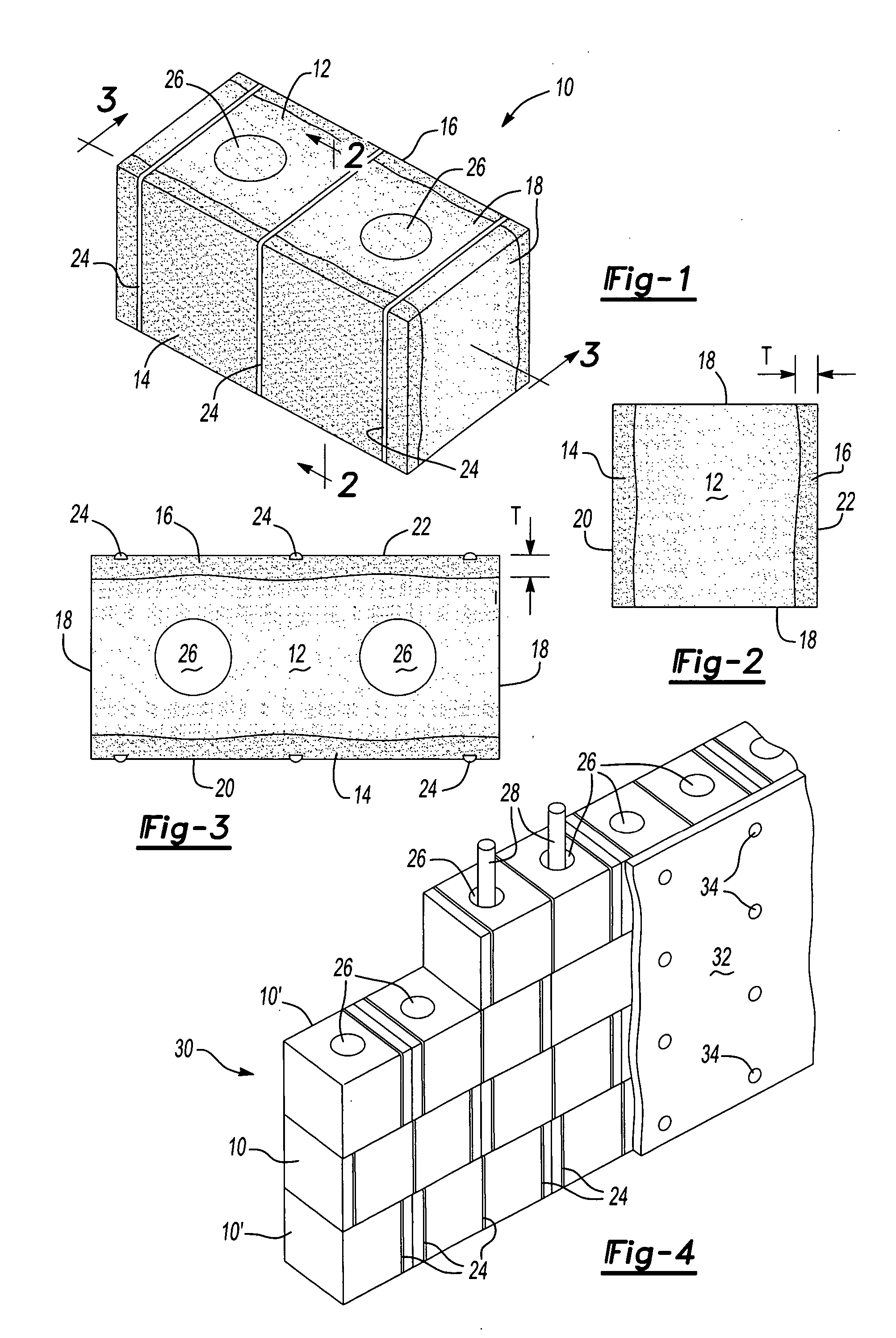Culm block and method for forming the same
a technology of culm blocks and culm blocks, which is applied in the field of green building blocks, can solve the problems of inability to burn this plant, inability to make room for the following season's crop, and lack of substantive nutritional values of rice straw stalks, and provide little value as fertilizers or other foodstuffs
- Summary
- Abstract
- Description
- Claims
- Application Information
AI Technical Summary
Benefits of technology
Problems solved by technology
Method used
Image
Examples
Embodiment Construction
[0020] In general, the present invention provides a building block made of green material and a method of making thereof. More specifically, the present invention provides a straw block comprising a plurality of straw stalks, wherein the straw block includes a plurality of generally flat planar walls lying orthogonal to one or more side walls to form a block having crisp (i.e., substantially ungrounded) edges.
[0021] Referring to the drawings, the present invention provides a building block 10 formed of a plurality of straw stalks 12. The block includes a first wall 14, a second wall 16 and one or more side walls 18 connecting the first and second walls. The first and second walls are formed opposite one another and preferably are planar and rigid (i.e., it will generally not deflect to the naked eye when in service, particularly when subjected to load of other similar blocks placed atop it), as discussed in more detail below. Furthermore, it should be appreciated that the first and...
PUM
 Login to View More
Login to View More Abstract
Description
Claims
Application Information
 Login to View More
Login to View More - R&D
- Intellectual Property
- Life Sciences
- Materials
- Tech Scout
- Unparalleled Data Quality
- Higher Quality Content
- 60% Fewer Hallucinations
Browse by: Latest US Patents, China's latest patents, Technical Efficacy Thesaurus, Application Domain, Technology Topic, Popular Technical Reports.
© 2025 PatSnap. All rights reserved.Legal|Privacy policy|Modern Slavery Act Transparency Statement|Sitemap|About US| Contact US: help@patsnap.com


